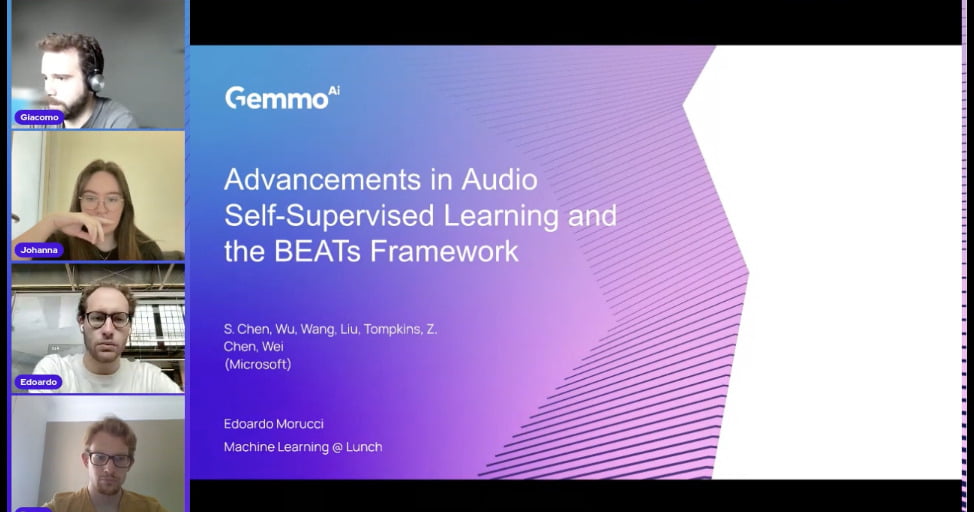Logic Behind Targeted Marketing
The application of artificial intelligence in marketing and business at large remains one of the most prominent uses of AI. Targeted marketing is one of the most popular and prolific uses on the internet. We’ve all exp...

The application of artificial intelligence in marketing and business at large remains one of the most prominent uses of AI. Targeted marketing is one of the most popular and prolific uses on the internet. We’ve all experienced that moment when an advertisement for something you recently searched starts following you around. In your newsfeed or before your music starts on Spotify or YouTube. How?
What is Targeted Marketing?

Despite becoming accustomed to it, if not a bit creeped out by it, it is important to note how and why these ads find us and how our information is being used. The reason is fairly simple, companies want to make a profit;, therefore, we have ads. The company wants to maximize their ads spending using targeted marketing. The how is where artificial intelligence comes into play.
How is AI Applied in Targeted Marketing?
It’s a widely known fact that the things we do online leave a trail of breadcrumbs. Each website visited, each media we post, and our Google searches. Now, companies are able to trace these crumbs all around the internet to look into our online behaviours. The analysis of these behaviours is where AI comes into play, by deciding which marketing campaigns are best suited to which consumers. This way, companies are able to spend their advertising dollars wisely by reaching out to their most receptive audience.
The Role of Predictive Analytics

Predictive analytics is how AI creates automated ad suggestions for companies. For example, Google can process the data and predict behaviours based on our previous search and buying history. Machine learning picks up on the patterns and categorises them into audience clusters, called “lookalikes” – types of individuals that share similar traits, habits, and interests.
Now, this approach doesn’t always get it right. Consider a time when you looked up a type of product a person only buys once. Like a washing machine. Once you’ve purchased the appliance, in theory you stop needing to see other types of washing machines. Given that the one you purchased is satisfactory. Therefore, in this instance, the washing machine ads following you around may be wasteful and ineffective.
But consider an individual whose interest is in something smaller and not a usual one-off purchase. Perhaps jewellery? In this instance, the individual may be tempted to purchase one every time he or she sees the advertisement. That is where the true power of predictive analytics comes in for online marketing.
Programmatic Advertising

Programmatic advertising is another advanced level in targeted advertising with AI. Instead of AI analysing consumer’s behaviour online and then feeding them curated ads, they buy the ad space first. Ad spaces are bought automatically, using AI algorithms to decide how much a particular space is worth in real-time using consumers’ specific demographics and search behaviours.
The programmatic process provides even more detailed customer insights. It evaluates a consumer and analyses the reaction to the advertisement they see. It is effectively learning continuously and updating profiles as it goes. Therefore, over time, the ads get more specific and targeted, increasing the chance of a purchase. This makes tailoring ads to specific consumer groups more efficient.
Key Takeaway
In the end, everyone, to some extent, lives on the internet. That means dealing with targeted marketing, one that’s getting better and better over time. But look, awareness of how the process works is a good place to start – to take advantage of the system and how to avoid being taken advantage of. After all, being fed relevant ads can work towards consumer benefit, it can lessen the time consumed looking for the perfect product. It even allows for comparison.
But at Gemmo AI, we believe that AI should always be used ethically. And so we write articles like these to keep the public informed. So stay tuned for more informative articles in the future.
Check out our other articles:
- Streamline Tasks and Save Time and Resources with AI
- How to Scale Your SME Business with AI
- Can AI Help the Shortage of Cybersecurity Professionals in Europe?
Author: Michelle Diaz
Photos: Unsplash
- Ironing out your strategy by Campaign Creators
- Google Analytics overview report by Myriam Jessier
- By Melanie Deziel
- By Kina
Check out our other resources:



